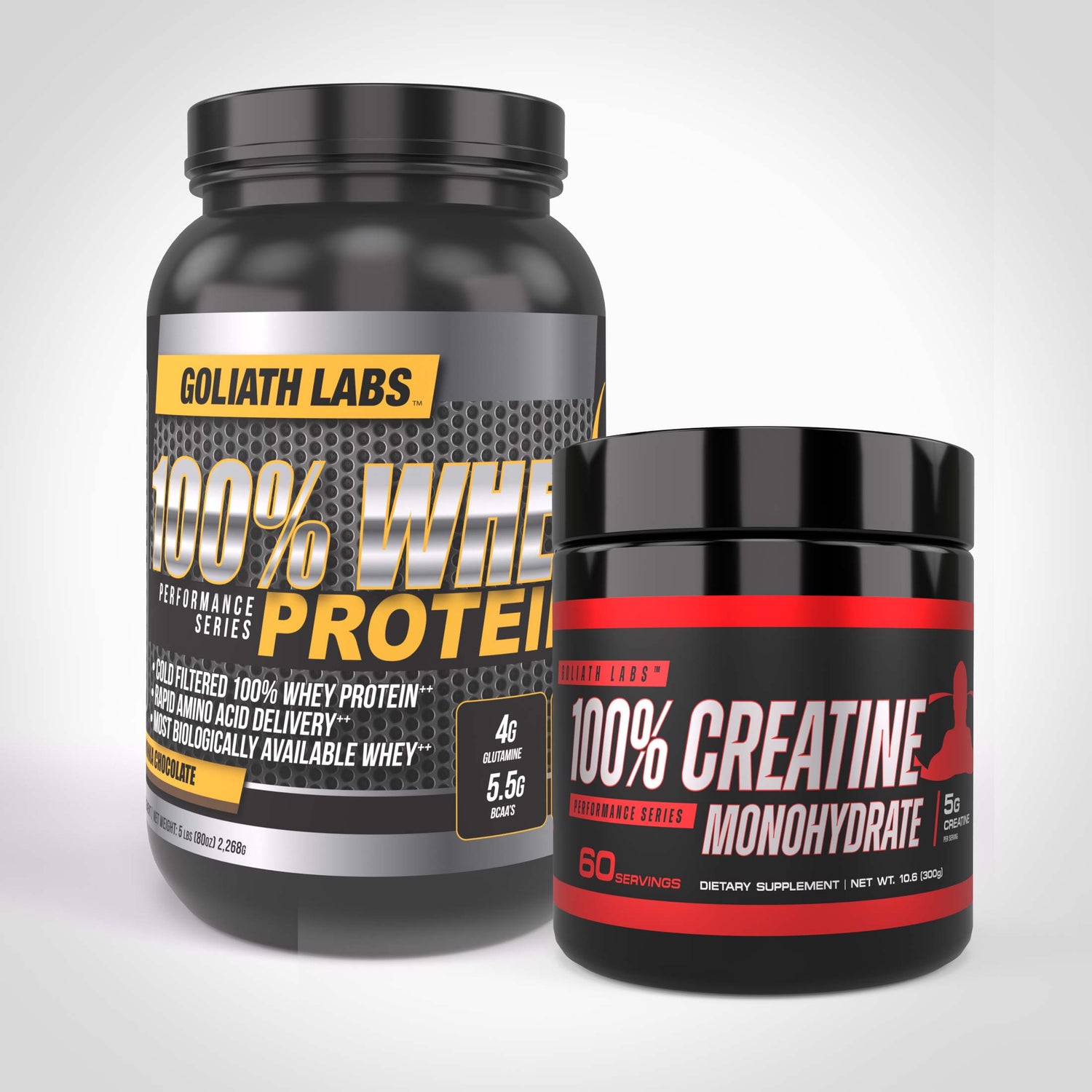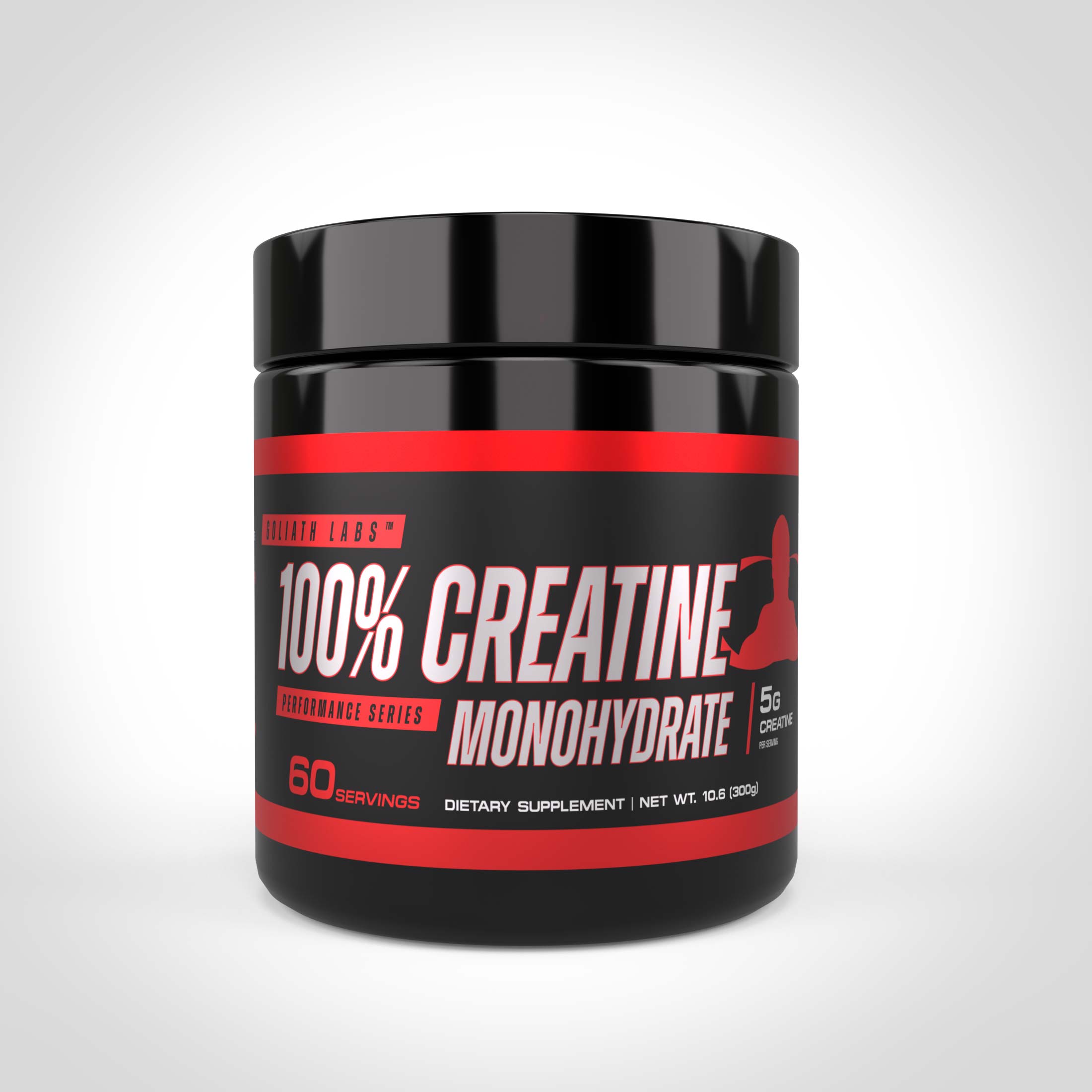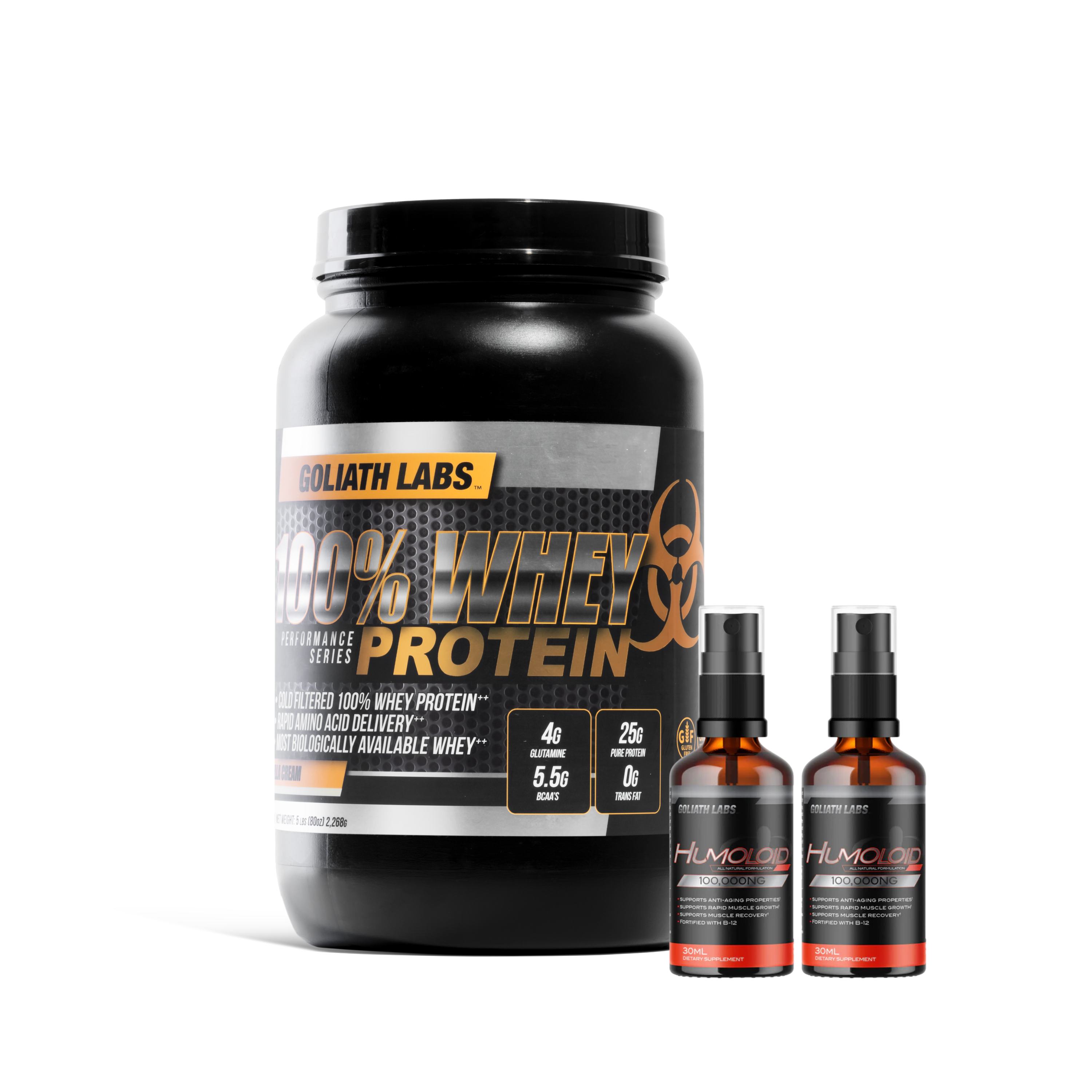Creatine enhances phosphocreatine stores in muscle cells, fueling short bursts of high-intensity activity, while whey protein accelerates muscle protein synthesis.
If that is too “sciency”, just know that the end result is better recovery and more growth.
Milk provides additional protein, carbohydrates, and micronutrients like calcium and vitamin D, which support both energy replenishment and structural tissue health.
However, practical concerns about taste, digestion, and absorption efficiency often arise, especially for beginners. Here's what you need to know to get it right.
Why Combining Creatine, Protein Powder, and Milk is So Popular
For athletes and fitness beginners alike, streamlining post-workout nutrition is critical for sustaining results over time.
Combining creatine, protein powder and milk into a single shake addresses three physiological needs simultaneously:
-
Energy replenishment
-
Muscle recovery
-
Macronutrient support
Creatine, by boosting phosphocreatine levels, enhances immediate power output during strength training and sprinting efforts.
Whey protein initiates muscle repair by rapidly delivering essential amino acids required for muscle protein synthesis. Milk contributes high-quality casein and whey proteins along with simple carbohydrates, which facilitate muscle glycogen restoration and support sustained amino acid availability.
This one-shake approach reduces complexity and ensures consistent nutrient intake, a key factor in maximizing training adaptations.
It also naturally addresses a common question raised by new users: whether creatine and whey protein should be mixed together or consumed separately. In most cases, combining them in one cup improves convenience without sacrificing effectiveness, provided the shake is consumed shortly after mixing.
Is It Safe to Mix Creatine, Protein Powder, and Milk Together?
Both creatine and whey protein act through independent biological pathways:
-
Creatine enhances intramuscular energy reserves.
-
Whey protein stimulates muscle protein synthesis.
Combining them does not diminish their individual benefits or cause unwanted side effects when dosed appropriately.
A common misconception is that milk degrades creatine into creatinine, rendering it ineffective.
In reality, studies show that creatine remains stable in cold milk for at least 30 minutes after mixing.
Significant degradation only occurs under sustained heat exposure or prolonged storage, conditions easily avoided by immediate consumption.
Although milk contains trace amounts of natural creatine, the quantity is far below the thresholds needed to improve performance or muscle mass.
To meaningfully elevate phosphocreatine stores, supplement with pure creatine monohydrate remains.
Benefits of Mixing Creatine, Protein Powder, and Milk
For busy individuals aiming to maximize training outcomes without unnecessary complexity, this method offers measurable advantages.
Convenience and Time-Saving
Mixing creatine and protein powder into milk creates a comprehensive post-exercise meal in seconds.
This practice eliminates the need for multiple shakes or staged supplementation protocols, reducing the risk of missing key nutrients during the critical recovery window. A consistent, streamlined routine also fosters stronger supplement habits over time.
Athletes who simplify their post-workout strategies are more likely to maintain long-term compliance, a factor closely associated with better strength and hypertrophy gains.
Potential Muscle Gain Synergy
Although creatine and whey protein do not create a biochemical synergy that amplifies their effects beyond individual supplementation, emerging evidence suggests that taking both together may offer slight practical advantages.
Creatine improves exercise performance during training sessions, allowing athletes to train at higher intensities, while whey protein accelerates post-exercise muscle repair.
By stacking them immediately post-workout, users may experience enhanced cumulative results over time, particularly in programs emphasizing progressive overload.
Enhanced Nutritional Profile
Adding milk to a creatine and protein powder shake significantly enriches the nutrient profile.
Milk supplies both fast-absorbing whey and slow-digesting casein proteins, supporting immediate and sustained muscle protein synthesis. Its natural carbohydrate content, primarily lactose, promotes insulin release, which may enhance creatine uptake into muscle tissue.
Additionally, milk provides essential micronutrients such as calcium, potassium, and vitamin D, nutrients critical for bone health, muscle contraction, and overall recovery.
For individuals aiming to increase calorie intake for bulking, a milk-based shake offers an efficient, digestible way to add quality calories without excessive reliance on processed supplements.
How Milk Affects Your Creatine and Protein Shake
Milk not only complements creatine and protein powder nutritionally, but also supports the physical stability of the final shake.
Creatine remains chemically stable in cold liquids like milk for at least 30 minutes after mixing, with minimal conversion to creatinine. Immediate or near-immediate consumption ensures that the integrity of the creatine is preserved, allowing users to benefit fully from supplementation without degradation concerns.
Temperature plays a critical role in both stability and palatability.
Using cold or cool milk maintains creatine’s structural integrity and significantly improves shake texture and flavor. Warm or hot liquids accelerate creatine breakdown and may negatively impact taste and mouthfeel, leading to a gritty or off-putting experience.
In case you are suffering from lactose intolerance or milk sensitivities, high-quality alternatives such as almond milk or oat milk offer viable substitutes.
These plant-based milks provide a smoother consistency and, when fortified, can deliver comparable levels of calcium and vitamin D. Choosing lactose-free dairy milk is another effective option for preserving both taste and nutritional benefits.
Downsides of Mixing Creatine with Protein Powder and Milk
While combining creatine, protein powder, and milk offers significant convenience and nutritional advantages, some practical drawbacks should be considered.
Most concerns are manageable with minor adjustments, but understanding these potential downsides ensures a smoother experience for long-term supplementation.
Taste and Texture Challenges
One of the most frequently reported issues is shake texture.
Mixing protein powder and creatine into milk can sometimes result in thicker, denser shakes, especially when using full-fat milk or larger serving sizes.
In some cases, poorly mixed shakes may form clumps, particularly if standard creatine monohydrate is used rather than micronized forms. A chalky or gritty mouthfeel may also develop if powders are not fully dissolved.
To minimize these issues, using a high-quality blender or a vigorous shaker bottle is recommended. Our micronized creatine is specifically designed to dissolve easily, improving texture and mixability when added to milk.
Potential Digestive Issues
Digestive discomfort is another common concern, particularly during a creatine loading phase where intake temporarily spikes to 20 grams per day.
When combined with the natural lactose and protein load of milk, this can occasionally result in bloating, gas, or mild diarrhea for sensitive individuals.
To reduce these effects, athletes are advised to start with smaller portions of both creatine and milk, gradually increasing volume as tolerance improves. Choosing lactose-free milk or lower-lactose dairy alternatives can also ease gastrointestinal stress without sacrificing post-workout nutrition.
Minor Practical Concerns
A frequent logistical question involves shake timing: “What happens if I mix creatine and whey with milk but don’t drink it immediately?”
Short-term storage, such as leaving the shake for up to 30 minutes, does not significantly degrade creatine stability. However, minor separation or settling of powders can occur if the shake sits too long.
Re-shaking before drinking can resolve this issue easily.
Best Practices and Tips for Mixing Creatine, Protein, and Milk
Optimizing the way you combine creatine, protein powder, and milk ensures that you get the full benefits of each supplement while avoiding common pitfalls.
Paying attention to mixing technique, dosing, and a few strategic enhancements can significantly improve the quality of your post-workout nutrition and support long-term consistency.
Proper Mixing Techniques
Always use a high-powered shaker bottle with a mixing ball or a strong blender to fully dissolve the creatine and protein powders. Shaking vigorously for at least 20–30 seconds ensures better integration of the powders into the milk, preventing clumps, grittiness, or separation.
Micronized creatine improves solubility further, making it easier to achieve a consistently smooth texture.
Cold milk enhances the overall mouthfeel, while warmer liquids should be avoided to preserve creatine stability.
Creatine and Protein Dosing Tips
Precise dosing is critical for both safety and performance.
The ideal serving for most users is 5 grams of creatine monohydrate combined with 20–30 grams of whey protein per shake. This ratio supports immediate recovery needs without overloading the digestive system.
Unless a healthcare provider specifically recommends it, creatine loading phases, which involve consuming large amounts over several days, are generally unnecessary for everyday athletes.
Loading increases the risk of gastrointestinal discomfort and offers only marginal speed advantages for muscle saturation. Consistent daily intake, as advocated by Goliath Labs, delivers the same performance benefits over time without complications.
Smart Enhancements for Better Results
Strategically adding carbohydrates to your post-workout shake can further enhance creatine uptake into muscle cells.
Simple options like blending in a banana, oats, or even a small amount of honey can create a mild insulin response, improving nutrient transport.
Creatine draws water into muscle cells to support strength and recovery, so athletes should increase daily fluid intake to optimize results and minimize any potential cramping or bloating.
These small adjustments, proper mixing, smart dosing, and hydration focus, transform a basic shake into a high-performance recovery tool.
What to Expect After Combining Creatine, Protein, and Milk
When consistently combined in a daily regimen, creatine, protein powder, and milk can deliver measurable improvements in strength, muscle volume, and workout recovery within two to four weeks.
The earliest changes often include better muscular pumps during resistance training sessions, faster recovery between workouts, and a noticeable increase in overall energy levels.
These effects are driven by creatine’s ability to expand intramuscular water content and improve ATP regeneration, alongside protein’s role in repairing exercise-induced muscle damage.
It is normal for some users to experience minor digestive adjustments during the first week, particularly if total dairy or supplement intake increases rapidly.
Temporary bloating or mild discomfort is usually short-lived and should not be interpreted as a sign of intolerance unless symptoms persist. Adjusting the amount of milk used, choosing lactose-free options, or slightly reducing creatine dosage can easily resolve early-stage issues.
Every athlete’s response timeline varies slightly, but daily adherence to a smart supplementation strategy almost always leads to meaningful gains in strength, endurance, and overall physical performance over time.
Is Mixing Creatine with Protein Powder and Milk a Good Idea?
For athletes focused on muscle growth, strength, and efficient recovery, combining creatine, protein powder, and milk into a single post-workout shake remains a practical and effective strategy.
The minor challenges of taste, texture, or occasional digestive adjustment are easily managed with simple preparation techniques and product quality choices.
More importantly, the consistent intake of properly dosed creatine and protein supports long-term improvements in performance without unnecessary complexity.
👉 Fuel your gains with Goliath Labs’ Micronized Creatine and 100% Whey Protein, engineered for smooth mixing, fast absorption, and real results.
Explore our full line of premium supplements, designed to help everyday athletes train harder, recover faster, and perform better, without the fluff.



